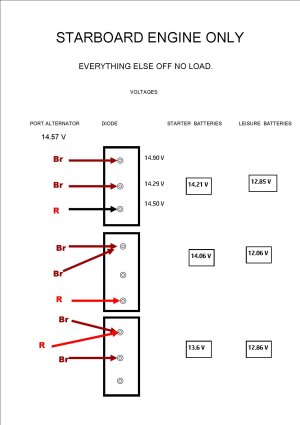oldgit
Well-known member
Thanks Paul.
Off down the boat again this morning, the wife is convinced there is another "she" in my life, which is true in a way.
This time going make sure it is only the alternators putting volts into the system.
The problem is simply that on any decent run ( 7-8 hours from the Mudway to Teddington )the leisure batteries do not appear to be getting charged from the alternators.
As for charging the domestics during a couple of hours a day on tickover while on the Thames, no chance .
Off down the boat again this morning, the wife is convinced there is another "she" in my life, which is true in a way.
This time going make sure it is only the alternators putting volts into the system.
The problem is simply that on any decent run ( 7-8 hours from the Mudway to Teddington )the leisure batteries do not appear to be getting charged from the alternators.
As for charging the domestics during a couple of hours a day on tickover while on the Thames, no chance .
Last edited:

